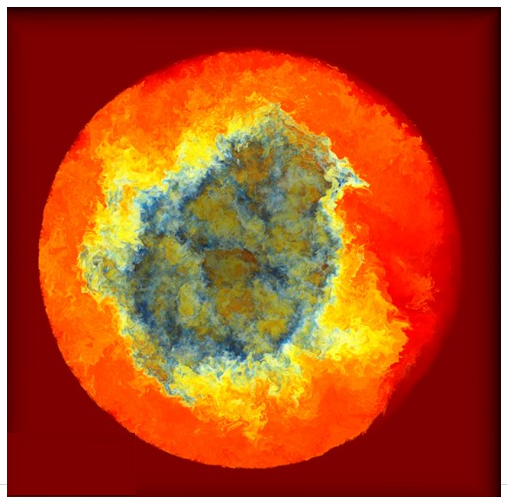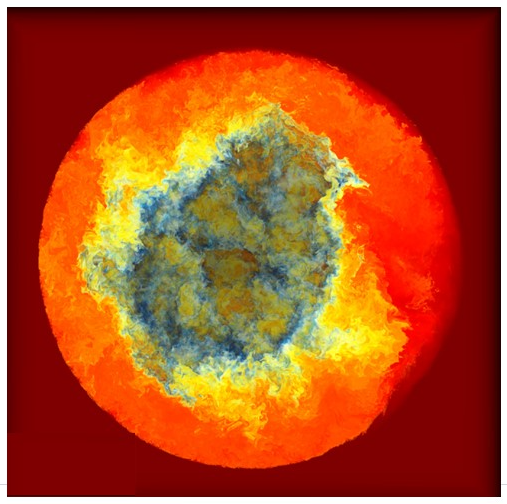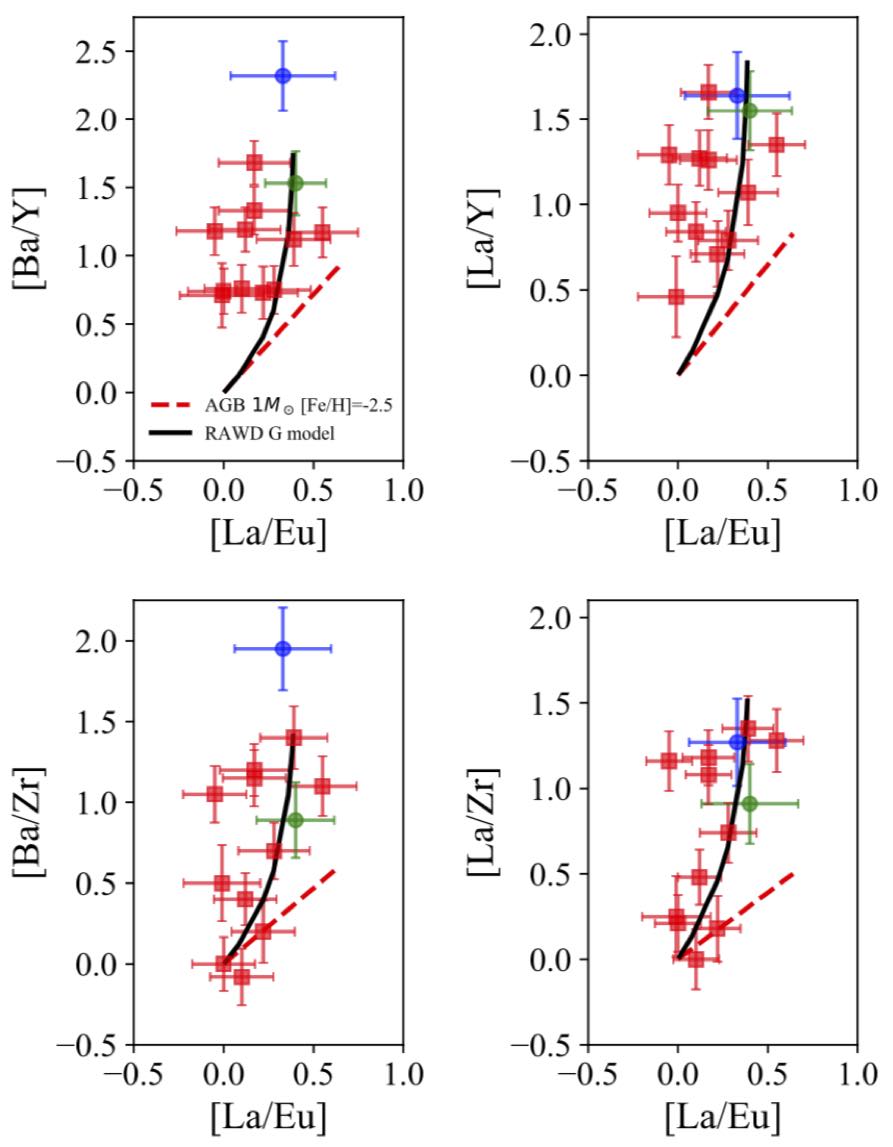Data
State-of-the-Art i-process Simulations and the Quest for the i-process Site

Contributed by Pavel Denisenkov and Falk Herwig (University of Victoria, Canada)
A JINA-CEE collaboration between UVic, CMU, MSU and UMinn, has developed a new advective (i.e. the transport of a substance by bulk motion of a fluid) model that allows 3D hydrodynamic simulations (Fig. 1) of the i process in rapidly accreting white dwarfs (RAWD) [1]. The model revealed significant differences between the upstream and downstream abundance profiles of unstable species and allows a more accurate nucleosynthesis calculation in violent events.

Monte Carlo simulations of the i-process nucleosynthesis with randomly varied neutron-capture rates of 164 unstable isotopes from 131I to 189Hf, with their variation limits constrained by Hauser-Feshbach model computations, were performed to study the impact of those uncertainties on predicted abundances of 18 elements from Ba to W enhancements of which are observed in carbon-enhanced metal-poor stars with enhanced s-process and r-process material (CEMP-r/s stars) [2]. Those post-processing simulations used a one-zone model with two constant neutron densities, Nn =3.16x1013 cm-3 and 3.16x1014 cm-3, and a more realistic multi-zone model based on the stellar evolution simulation of H entrainment by He- shell convection in the RAWD model G from [3]. Two neutron-capture reactions with the strongest correlations between their rate variations and the predicted abundances were identified for each of the 18 elements. It was found that the discrepancies between the observed and predicted abundances of Ba and Pr in the CEMP-r/s star CS31062-050 could be significantly reduced if the rate of neutron capture by 137Cs were decreased and the rates of neutron captures by 141Ba or 141La were increased. It was also shown that the model of i-process nucleosynthesis in RAWDs could better explain the heavy-element abundance enhancements in CEMP-r/s stars than a model of low-mass low-metallicity AGB stars [4], in which i-process nucleosynthesis occurs when convection driven by a He-burning shell thermal pulse entrains H from the outer layers of the star (see Fig. 2).

References:
[1] D. Stephens, F. Herwig, P. Woodward, P. Denissenkov, R. Andrassy, H. Mao, MNRAS 504, 744 (2021)
[2] P. Denissenkov, F. Herwig, G. Perdikakis, H. Schatz, MNRAS 503, 3913 (2021)
[3] P. Denissenkov, F. Herwig, P. Woodward, R. Andrassy, M. Pignatari, S. Jones, MNRAS 488, 4258 (2019)
